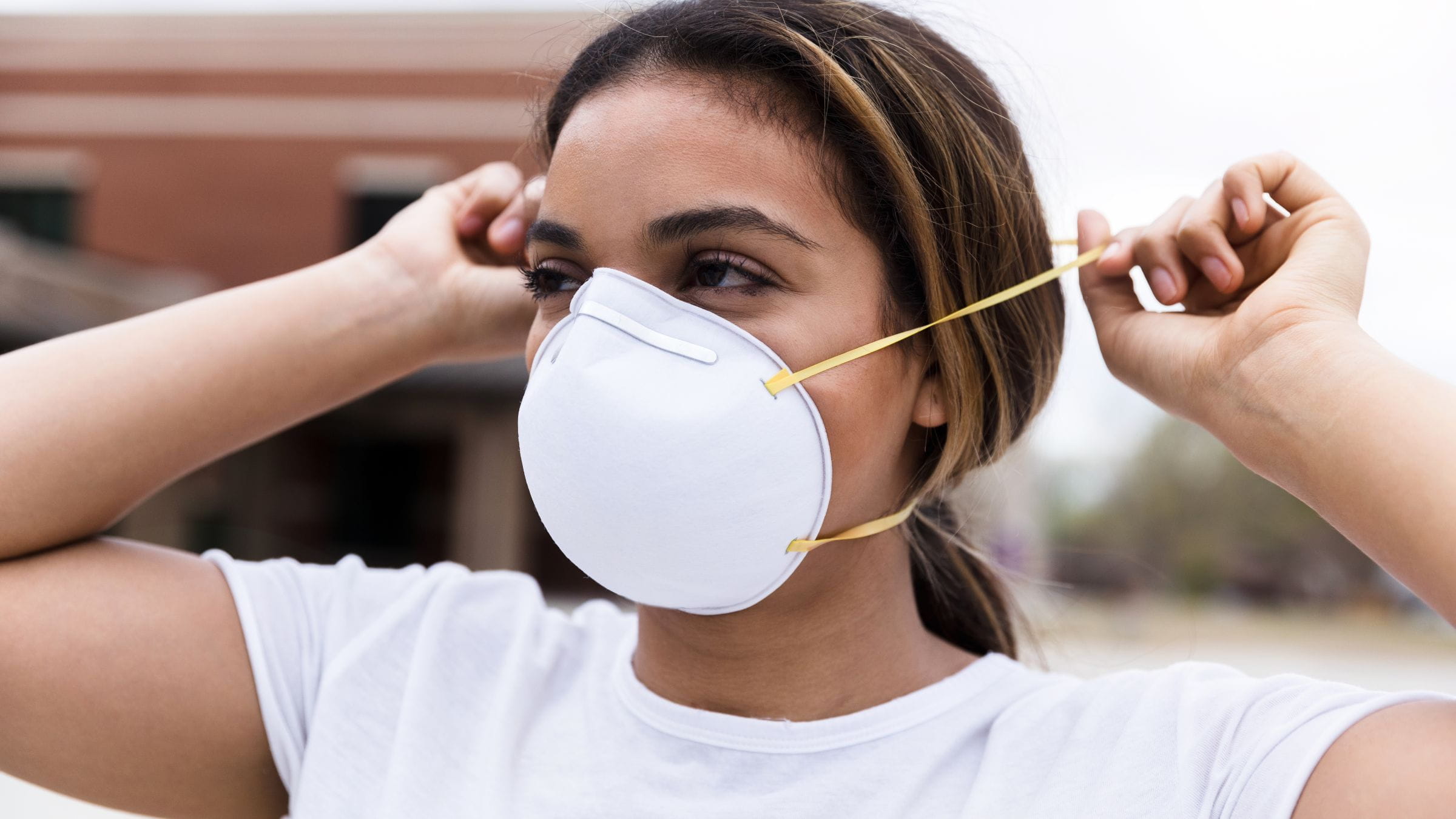
Editor’s note: As what we know about COVID-19 evolves, so could the information in this story. Find our most recent COVID-19 articles here and learn the latest in COVID-19 prevention at the Centers for Disease Control and Prevention. Some photos and videos on this site were filmed prior to the COVID-19 outbreak or may not reflect current physical distancing and/or masking guidelines.
All the talk about N95 masks has you thinking: Do I really need to switch?
You may have tried an N95 mask recently and it felt tight, and possibly stuffy, compared to the paper or cloth masks we’ve grown accustomed to.
Loose-fitting isn’t the way to go. With omicron charging on, the most infectious of the COVID-19 variants so far, the N95 is your best line of defense. Think of the N95 mask as like a deadbolt on a door — very little of the unwanted gets past it.
But if the N95 feels too restrictive, and you’re unwilling to wear it, the right mask for you is the one that fits you the best and that you wear consistently.
It’s unrealistic to expect everyone will don an N95 mask or wear one in all situations. You may not tolerate its snug fit, attaching to the back of the head instead of around the ears and gripping around your mouth and nose.
N95 masks versus KN95 masks
If you find the N95 mask too confining, the KN95 mask may be a bit more comfortable with its straps being around the ears. The KN95 mask is like the N95’s Chinese cousin. It’s made and certified in China; the N95, in the United States. Both are designed and rated to filter out 95% of particles in the air, which accounts for the “95” in their names.
That high level of filtering distinguishes KN95 and the N95 from cloth and paper surgical masks. They work differently. The filter within them not only captures large droplets released when you or someone else coughs or sneezes, but also the much tinier airborne particles that get released in breathing. Cloth masks as well as disposable surgical masks were designed to contain droplets but only have limited ability to filter the much smaller airborne virus particles.
Among all masks, the N95 offers the highest protection, followed by KN95, then disposable surgical masks and finally cloth masks.
If you’re wearing a surgical or cloth mask even more than six feet away from someone who has COVID-19, you still might breathe in particles that could infect you with the virus. And at this stage in the pandemic, you can assume if you’re in a public place, at least some of the people around you are infected.
With any mask you wear, why is a snug fit so important?
The virus causing COVID-19 travels in the air. If someone infected with the virus coughs or sneezes, the virus gets released in microscopic air particles. Even just breathing out can release the virus into the air, if you’re infected. Indoors, those particles can stay in the air for 70 to 90 minutes after the infected person has left the room, with the highest risk being in a poorly ventilated area.
Wearing a loose mask prevents it from fully filtering the air that goes through it. So regardless of the mask you wear, it’s important for it to fit snugly against your cheeks, around your nose and down around your chin.
If you opt for an N95 or KN95 mask, it’s important to know how to safely and properly put it on and later remove it.
Am I getting enough air when I’m wearing an N95 or KN95 mask?
When you’re wearing an N95 or KN95 mask, you might feel shortness of breath. Anxiety adds to that as well. But be assured: these masks don’t reduce the level of oxygen you breathe in. Typically, there’s 21% oxygen in the air and that 21% still gets through the mask. It might be more humid or hotter inside your mask, but there’s still the same amount of oxygen in that air. And the carbon dioxide you breathe out passes easily through the mask and doesn’t build up inside it.
At first, cloth and surgical masks were considered a good defense against COVID-19. Why did the mask guidance change?
The Centers for Disease Control and Prevention recently updated its guidance about masks, responding to the surge spurred by the omicron variant. Earlier in the pandemic, there was a shortage of N95 masks, so people were encouraged to use cloth or three-ply surgical disposable masks. Those were believed to be enough to fight against the virus that causes COVID-19. With the delta and omicron variants, both known to be significantly more infectious than earlier variants, we need more protective masks such as an N95 or KN95.
Are N95 and KN95 masks reusable?
Both were made and designed to be put on once and thrown away right after they’re taken off. Wearing them more than once reduces their level of filtration and their structural integrity. However, it can get expensive to toss them out each time you use them. Instead, you can use them a few times as long as they’re not soiled or wet, and if there’s still a very tight seal around your nose and mouth so no air can get through the sides of the mask and miss the filter. Over time, the mask’s filter can get clogged, making it difficult to breathe through. If that happens, it’s best to discard it.
Where can I get a free N95 mask?
Free N95 masks are being given away by the federal government at various retail pharmacies offering COVID-19 vaccines. Each person is allowed to get up to three free masks. Masks will be available at many of the pharmacies involved in the Federal Retail Pharmacy Program.

Ready to get vaccinated?
We have appointments available as early as today.
Schedule now




